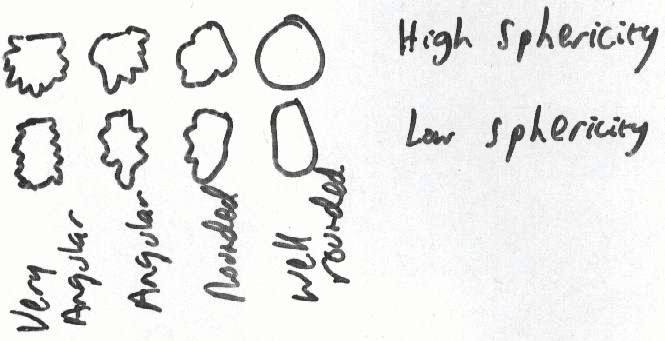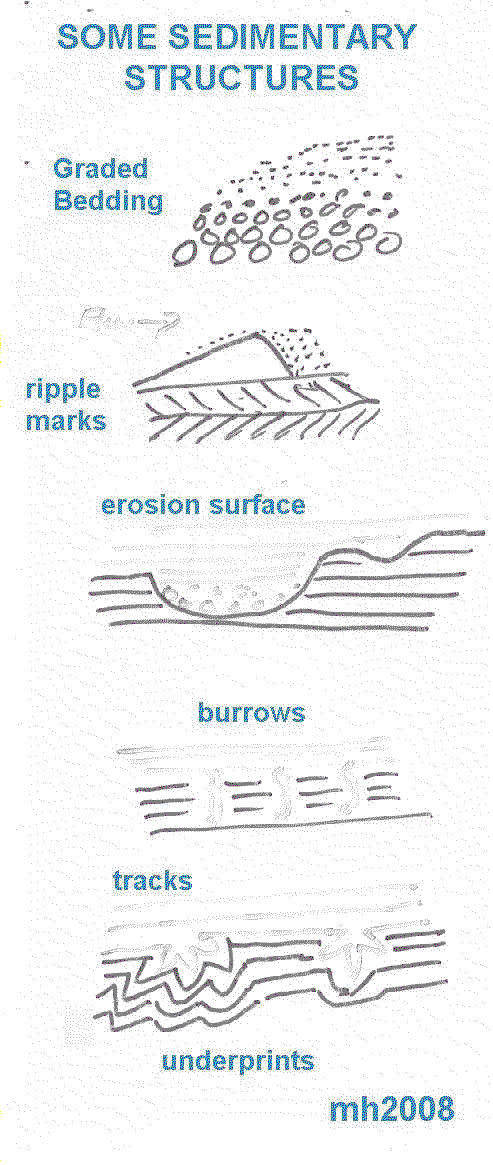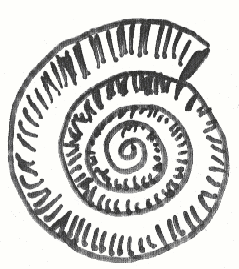
Forensic Geology Course
by Mike Horne FGS
for the University of Hull
Departments of Chemistry and Lifelong Learning
Forensic Geology lectures
Copyright statement -
Permission is given for single copies to be made or printed for personal, educational
or non-commercial use.
You may make multiple copies for educational or non-commercial uses if you inform
me. You may not alter any of the pages without permission.
I post here a single document based on my lecture notes; it is another version of my talks which I hope will aid your revision. The case studies are not published because the details are not in the public domain:- you will have to rely on your own notes that you made during the lectures.
Please note though that these are my lecture notes - these are notes intended to remind me what to tell you. As students you need to make your own notes to remind you what you need to remember. The two things are not the same!
Please remember that I am dyslexic so these notes may contain spelling errors.
There will be examination questions based on these lectures.
My aim in these lectures is to introduce you to some of the fields of the science of geology that could have applications in a forensic investigation. It is more likely that the forensics scientist would seek the help of a specialist in high-profile cases. These specialised investigations can be expensive, so are probably only used when the case merits the costs.
My plan is to talk about the scope of the science and the sorts of materials that are studied by geologists. Then I will briefly describe some of the specialist techniques that are available. Before focusing on two specialisms that I am familiar with and use in my research. Finally I will show how those specialisms have helped to solve two high profile murder cases.
Please be aware that generalisation within a science is intended to make it understandable to the public, but often there are specific examples that contradict the generalisations!
What is Forensic Science?
According to my dictionary the word Forensic means something pertaining to the courts - it comes from the Latin word forum meaning a public place. So it is evidence that is open to public scrutiny in a court.
Courts can be both criminal or civil. A scientist can act as "expert witness" in both civil and criminal cases. In both instances the expert's evidence is open to scrutiny - so it has to be good science! Though the popular image of forensic science is that of analysis of samples from a crime scene!
The work of a geologist as an expert witness in civil cases might involve investigation of the ground stability in cases of building subsidence, ground water contamination, contaminated land, mining subsidence, mining pollution, seepage from landfill sites and finding suitable water resources for a brewery.
Many of the techniques and priciniples used in geology can be applied to forensic investigations of a crime scene, "cold cases", archaeology and palaeoanthropology. The major differences between these is in time scale - in a forensic investigation there may be more biodegradable evidence remaining and witnesses who can supply information, in archaeology there may be historical documents that can give clues, but in geology we are dealing with times that are literally prehistoric - anything from a few thousand years ago to billions of years ago.
Geology is the study of minerals, rocks, fossils and the processes that affect them.
Rocks can be divided into three main categories.- Igneous, Sedimentary and Metamorphic. Igneous rocks consist of crystals of minerals that have formed when molten rock (magma) has cooled. The slower the magma cools the larger the crystals will be and if it cools rapidly the crystal will be small or occasionally a natural glass will form. When we look at igneous rocks we will often see definite angular crystal shapes which are interlocking, with no spaces between them. Sedimentary rocks are formed from grains or clasts of minerals or pre-exising rocks. They form in land, river or marine environments from the erosion of older rocks. They may contain the fossilised remains of animals and plants. When we look closely at Sedimentary rocks we are likely to see grains that have been rounded; there may be spaces between the grains that may have been filled with a cement. We may see some orientation or sorting of the grains into different sizes. Metamorphic rocks have been altered by heat and/or pressure. New minerals may have formed and these may have a realignment; any pore space has been filled or closed by the pressure. This is known as the Rock Cycle.
Like all sciences geology can be divided into a series of specialisms, and within those there are even more specialised fields of research. The study of geology can crudely be split into two - hard rock and soft rock. Hard rock geology includes:- mineralogy (the study of minerals), crystallography (the study of crystals), the petrology (study of rocks) of metamorphic and igneous rocks, geophysics (the physics of the earth and physical ways to study the earth), structural geology (geological structures such as folds and folds and their formation), geochemistry (chemical analyses of rocks and minerals)... Soft rock geology includes:- sedimentology (the study of sediments and how they form and behave), palaeontology (the study of fossils), stratigraphy (the study of earth history using the layers of rock) ...
Geology can be used in a forensic investigation in several ways -
Geophysical methods that can be used at a site include -
Some of these techniques can be seen in use in "Time Team".
[Stratigraphic investigations are explained in lecture 2]
All Rocks, Minerals and Fossils have a story to tell - how they were formed and where they were formed and perhaps the journey they took to end up where they are now.
"Hard Rock Geology" -
"Hard Rock" techniques can be used on the following materials to provide forensic clues -
The following techniques can be used -
Geochemical Techniques that we can use in a sophisticated laboratory include -
"Soft Rock" geologists study -
"Soft Rock" Techniques include -
Particle sizing
Here is a simplified version of the Wentworth Grain Size Scale
|
size
|
mesh size
|
|
|
4um or less
|
Clay
|
|
|
4 - 63 um
|
Silt
|
|
|
63um - 2mm
|
Sand
|
240 - 8
|
|
2 - 4 mm
|
Granules
|
|
|
4 - 64 mm
|
Pebbles
|
|
|
64 - 256 mm
|
Cobbles
|
|
|
>256 mm
|
Boulders
|
By sorting the grains into different sizes using sieves and weighing the different fractions we can quantitatively compare samples.
[note - The term sand can mean different things to different sorts of geologists - it can mean clasts of a specific grain size (as above), a unconsolidated sediment mainly composed of quartz grains, a shell sand or (when it has a capital letter) part of the name of a lithostratigraphic unit. Similarly the term clay can mean grains that are 4 um or less in diameter, a group of silicate minerals, an unconsolidated sediment composed of small grains which mostly are clays minerals or (with a capital letter) part of the name of a lithostratigraphic unit.]
Microscopy -
Shape and size - or Rounding and Sorting.


Clast counting -
by using a low power stereomicrocope (which has a long working distance between the lens and sample) we can identify and count the different grains in a sediment sample. To obtain a statistically unbiased result we should aim to count between 400 and 1000 grains. Even if you cannot identify the minerals you can distinguish the different types and quantify them. Some common minerals found in sediments are quartz (clear, glassy), yellow quartz (transparent to translucent yellow to orange of ten well rounded), muscovite (clear flat sequin like), haemetite (dark red-brown, opaque, attracted to a magnet).
percentages:-
| sample 1 | sample 2 | sample 3 | sample 4 | |
|
clear qtz
|
89
|
73
|
52
|
|
| yellow qtz |
7
|
15
|
7
|
|
| shell fragments |
18
|
|||
| mica |
4
|
10
|
||
| garnet |
1
|
4
|
||
| microfossil |
1
|
9
|
The mineralogy, size, shape and sorting of a sediment or sedimentary rock will depend on several factors -
Some examples of these different environments are -
Sediment that is deposited further from the source tends to be smaller, well rounded, well sorted, more "mature" (the less robust minerals have been lost). Close the source the sediment will be large, more angular, less well sorted and less "mature".
When the sediment is being transported (e.g. by a river) the faster the flow rate the larger the load that can be carried (and thus larger grain sizes and heavier minerals). As the flow slows the denser material can no longer be carried and so it is deposited.
If we examine the sediment in situ we may be able to see some sedimentary structures that give further clues about the depositional environment.

Stratigraphy and biostratigraphy.
Geologists study the ages of rocks and consider that there are two sorts of time to help unravel their history. Absolute time is measured in years Before Present (B.P.) [and present is set at 1950 CE!]. This is done by measuring the radioactive decay of certain elements. Relative time is an indication of the order in which things happened and is found by carefully noting the relationships between the different rocks and the fossils they contain. Whereas absolute time is expressed as a number of years (or thousands or millions of years) with an error factor relative time periods are given names, such as the Jurassic Period.
There are three simple rules that are used for relative dating by geologists and archaeologists and also can be used at crime scene investigations:-
Fossils are the hard parts of animals that have been turned to stone. The preservation of the soft parts is rare because they decay or are scavenged soon after death. Similarly the fossilisation of plants is not common, and the fact that most sedimentary rocks are marine in origin does not help either! When an plant or animal dies its chances of becoming fossilised also depends on rapid burial by sediment. So the bigger the animal, the lower the chances of becoming fossilised completely. There are several reasons why we do not find many large dinosaur fossils in Yorkshire - they lived on the land, they were too big for rapid burial and perhaps they were not that common any way. Whereas we can find large numbers of their footprints - which proves that were wandering around Scarborough in Middle Jurassic times. Footprints are an example of a "Trace Fossil" - they are not "Body Fossils" but in many ways are more interesting because they tell us something about what the animal was doing. A bit like footprints at a crime scene, we can establish perhaps whether the dinosaur was running or walking or resting, whether the ground was soft at the time ...
We could loosely divide fossils into categories by size [this is my categorisation] - Macrofossils which are larger than half a centimetre and can be seen with the naked eye; mesofossils which are 1 to 10 mm in size and the use of a magnifying lens would help you see their details; microfossils which are about 50um to 2 mm (though some are up to 15cm in diameter) and tend to be studied using a low magnification stereo-microscope; and nanofossils which are smaller than 50um and tend to need specialised equipment and techniques for their study. Because they are more likely to become fossilised and because they are more common originally small organisms become useful tools for studying stratigraphy and palaeoecology.
Evolution -
Species of animals and plants will evolve through the processes of random mutation and "natural selection".

Some animals got it "right first time" - they are perfectly evolved for their environment. Lingula first appeared about 500 million years ago and is pretty much the same today. Other species of plants and animals are often (in terms of geological time) changing - new species emerge and then become extinct. Some of these can be used by palaeontologists and stratigraphers to "tell the time".
 Datyllioceras
commune is a species of ammonite that had a very limited (in geological
time) span - perhaps half to two million years.
Datyllioceras
commune is a species of ammonite that had a very limited (in geological
time) span - perhaps half to two million years.
Biostratigraphy -
Biostratigraphy is the science of comparing the relative ages of rocks using the fossil that they contain. We create "Zones" which are based on the first or last appearance of a particular species. Good zone fossils need to-
Microfossils -
examples -
Charophytes - the fruiting body of a freshwater plant
Ostracods - can be described as a small shrimp in a bivalved shell. These live in fresh, brackish or marine environments. Some species are very sensitive to salinity (in a crime investigation they could help to indicate where in an estuary the victim drowned). They swim or crawl around.
Foraminifera - could be described as an "amoeba in a shell". They live in marine or brackish water. They can be split into five major types: attached to a plant or rock; free floating (planktonic); benthic calcareous (bottom dwelling with a calcium carbonate shell); agglutinated (bottom dwelling types that build their shell out of grains of sand and other stuff); large (benthic calcareous that are 5mm to 15 cm in diameter).
Other groups of microfossils and nanofossils are studies by palynologists. Some of these required some vigorous chemical treatment to separate them from the sediment - washing with hydrochloric acid, hydrofluoric acid, nitric acid, acetic anhydride and bleach. Others are so small that we need to use a Scanning Electron Microscope to look at them.
Dimoflagellates - single shelled plants that live in the sea, freshwater or bogs.
Pollen - nanofossils.
Coccoliths - calcareous nanofossils about 10 um in diameter - a calcareous algae.
As well as enabling us the find the age of a rock these organisms are good indicators of environmental conditions - such as salinity:-
|
freshwater
|
brackish
|
marine
|
|
| Charophytes |
0
|
||
| Ostracods |
0
|
0
|
0
|
| Benthic Forams |
0
|
0
|
|
| Planktonic Forams |
0
|
||
| Coccoliths |
0
|
||
| Pollen |
0
|
0
|
Cases - these notes are not in the public domain. sorry.
Conclusions -
This brief introduction to the work of geologists and the cases we have studied have hopefully indicated where the science can help in solving a crime. The forensic scientist is more likely to call for the help of a specialist in the field, but some of the principles used in geology and archaeology have a more general application to the investigation of a crime scene also.

copyright Mike Horne - 2019
Hull Geological Society Home Page Geology Courses Homepage